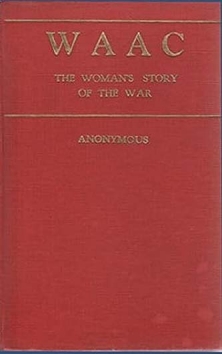women_in_US-Army_600.jpg) Here is the skinny on Colonel Oveta Culp Hobby (1905 - 1995). This article begins at a crucial point in her life, when she took charge of the Women's Army Auxiliary Corps (later the Women's Army Corps). With no prior military experience, Hobby entered the U.S. Army as a major and immediately began organizing the Women's Army Auxiliary into an efficient clerical element within the army. Her abilities were evident and she was soon elevated to the rank of colonel; in a similar light, the skills and abilities of the WAACs were also recognized and they, too, were given more challenging jobs. After the war, Hobby went on to distinguish herself in a number of other government positions.
Click here to read about WAC accomplishments by the end of 1945. "When recruits in the new Women's Army Auxiliary Corps - commonly dubbed WAACS - reported for training at Fort Des Moines, Iowa, women for the first time in American history became members of Uncle Sam's Army."
(The title concerning "the first woman in the Uncle Sam's Army" is believed to go to a lass named Deborah Sampson who served in George Washington's army in 1781, under the name "Robert Shurtliff".) Newsweek reporter Vera Clay was not slow in accepting the U.S. Army's invitation to don the khaki uniform and learn what goes into the training of a WAAC. In the company of fourteen other women reporters, she took the train to Fort Oglethorpe, Georgia, and for the next six days, the group began to learn about all things WAAC. "They're career women, housewives, professionals, factory hands, debutantes. They've taught school, modeled, supported themselves, as secretaries, salesgirls, mechanics. Single and married, white and colored, between the ages of 21 and 45, they're corresponding with a beau, in Ireland, a husband Australia, or the 'folks back home' in Flatbush. But varied as their background may be, they've enlisted in the Women's Army Auxiliary Corps (WAAC) with a common purpose: to get behind America's fighting men and help win a lasting peace."
"When well-versed in army-administrative methods, the WAAC will cause the transfer of 450 enlisted men to combat areas each week. It realizes full-well its responsibility and has dedicated itself to the idea that the Women's Army Auxiliary Corps will prove itself equal to the opportunity."
"The Women's Army Corps (WAC), first organized as an auxiliary May 14, 1942, became 'regular army' a little more than a year later...They were secretaries and stenographers for generals. They operated switchboards which kept communications alive throughout the European theater of operations...Their keen eyes and quick fingers made them expert as parachute riggers. They became weather experts [charting the aerial routes for the long-range bombers of the U.S. Eighth Air Force]."
- from Amazon:
 140,000 women served as WACs - - although this article stated that there were only 100,000. A Click Magazine photo-essay about the hard-charging WAACS of the Motor Transport School in glamorous Daytona Beach, Florida. Trained to operate and maintain two-ton trucks, the American women of the WAACs were mobilized to run the vast convoy system within the U.S. in order to free-up their male counterparts for more dangerous work in hostile regions.
Click here to read about the most famous woman truck driver in all of World War II...
|
MORE ARTICLES >>> PAGE: * 1 * 2 * 3 * > NEXT |
|